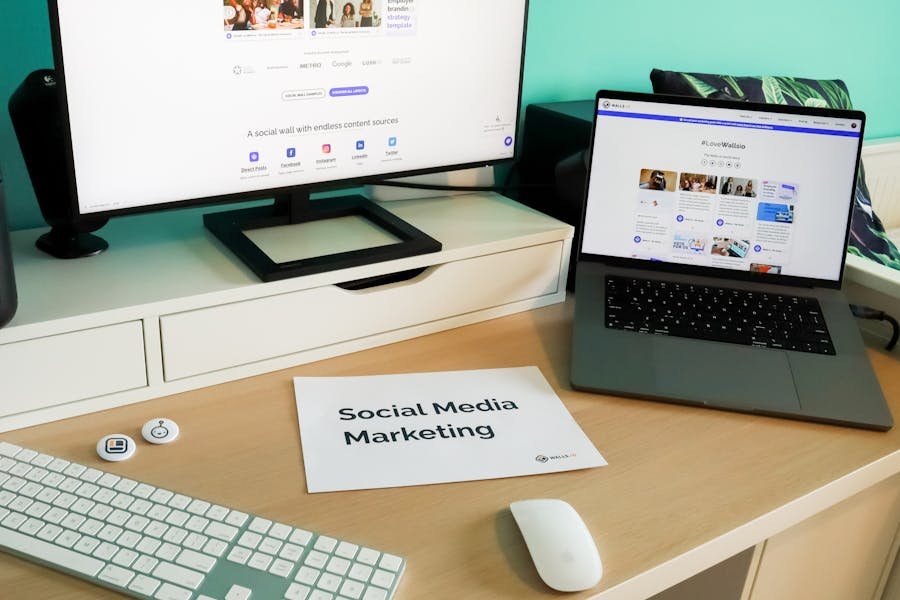
Social Media Marketing Future Trend
For marketers, the modern social media setting is turbulent, to put it mildly. What worked yesterday will become outdated tomorrow and marketers are in for a great challenge of spotting each new wave early—and turning its splash into profit before it fades. But how did social media become such a crucial part of the marketing industry? A few reasons stand out:
1. Direct access to huge audiences
Social media platforms erased the traditional barriers between brands and consumers. Now, companies can speak directly to their audience and get instant feedback.
2. Data-driven targeting
Social media offers an unmatched depth of data. Marketers can target ads based on interests, behavior, demographics, and even mood — something unimaginable in the billboard-and-TV era.
3. Viral content sells
One clever post or short-form video can reach millions. That potential for organic visibility gives smaller brands a chance to make a breakthrough even with their moderate marketing budget.
4. Community building
It’s no longer just about selling. Brands use social media to create a sense of belonging and gather like-minded people around their products.
5. Real-time relevance
Social media gives brands an opportunity to react quickly to cultural moments, ride trends, and stay relevant.
Sure, it’s a lot of work already, but trying to guess where it goes next requires even more effort and knowledge. Let’s try to spot some possible changes marketers should already consider in planning their future campaigns.
Catching Up vs. Leading: What Works Better?
There are two ways to use social media trends for your marketing purposes. The first and already common approach is catching up with existing trends. This method requires a skilled team of professionals who are deeply familiar with how things work on social media and can quickly create relevant content. It must be really done well to succeed, as people tend to be skeptical about brands’ efforts to blend into the organic feed.
Though not cheap and effort-consuming, catching up is a safer way. You spot what already works and hop on. It shows you’re responsive and up-to-date, and often helps you stay relevant without too much risk.
The second approach, which is creating trends, is another adventure story. It’s challenging because people don’t like being “sold” something in disguise and it rarely isn’t obvious instantly. Timing is another thing you need to calculate correctly—too early, and no one gets it; too late, and it feels unoriginal.
It also requires a strong brand identity and creativity. If you don’t already have cultural weight or originality, people won’t follow. The payoff is rare but huge though. When it works (like Wendy’s Twitter sass, or Duolingo’s unhinged TikTok owl), it can redefine the brand not to mention drawing huge new audiences to it.
Hopping on trends definitely feels safer and more doable. However, for new businesses, the second approach could work like a golden ticket to the big leagues. Let’s explore the advantages of social media marketing trends we can expect in the near future.
Trends to Likely Define the Year 2025 in Marketing
We can state some of them with confidence already. Check up on where your marketing effort should go in 2025.
Focus on video content
Videos are undeniably the most effective format on social media today, and their popularity will only increase in the coming years. They offer businesses the ability to showcase their products authentically, engage consumers quickly, and drive higher conversion rates. Marketers who master video marketing will be best suited to drive meaningful business results. The future of social media advertising is undeniably visual.
Looking ahead, video content will only grow in importance. Social media platforms will likely continue to prioritize video in their algorithms. As for short-form video content, it’s likely that platforms like TikTok will only grow in prominence. More businesses will integrate video into their marketing strategy, not just for product promotions but for brand-building and customer engagement. We can also expect the rise of interactive video ads, where users can choose their own adventure or influence the video’s direction providing endless opportunities for even more dynamic and engaging content.
Social media as a primary shopping destination
Social media platforms have increasingly become the primary shopping destination for many consumers, often outperforming official websites in terms of sales. As users spend more time on platforms like Instagram, Facebook, and TikTok, they are bypassing traditional search engines to discover products directly through their feeds, posts, and ads. In response, social media platforms are evolving, offering tools for small businesses and creators to sell directly to consumers without the need for third-party intermediaries.
This trend is expected to intensify in 2025, as social media platforms continue to refine their e-commerce capabilities, providing even more seamless and integrated shopping experiences for users and businesses alike. The integration of AI-driven recommendations, shoppable videos, and personalized ads will make shopping within social media platforms even more exciting.
AI boost in every aspect
AI’s influence is already undeniable. In 2025, AI is expected to dominate social media trends, transforming the way platforms operate and how businesses engage with their audiences. AI-powered tools will continue to improve content creation, personalization, and customer service. For example, AI algorithms will be able to deliver hyper-targeted ads based on users’ behavior, preferences, and even predicted needs.
Additionally, AI-driven chatbots and virtual assistants are already revolutionizing customer interactions, providing real-time support and enhancing user experience. Social media platforms will increasingly adopt AI to automate content moderation, helping to ensure a safer online environment by detecting harmful content more effectively.
Moreover, AI will play a huge role in creative processes, allowing brands to generate personalized visuals, videos, and captions that resonate with individual users. These innovations will not only save time but also boost content relevance, helping businesses to stand out in a crowded digital space.
By 2025, AI will not just be a tool for enhancing social media campaigns; it will be the basis of successful marketing strategies.
Focus on building meaningful connections
In 2025, brands will increasingly focus on building authentic connections and communities through social media, recognizing that genuine relationships with their audience are more important than simply pushing products. Social media users are becoming more selective and expect brands to engage with them in meaningful, personal ways. Rather than bombarding followers with direct sales pitches, successful brands will focus on creating content that resonates with their audience’s values, interests, and concerns. This could mean sharing behind-the-scenes content, supporting social causes, or initiating conversations that invite feedback and dialogue.
However, it’s crucial for brands to navigate this space carefully. Over-commercializing posts or trying too hard to “fit in” with trending vibes can come across as inauthentic, which can lead to disengagement or, worse, alienation. The growing awareness of manipulative marketing tactics is causing a backlash among users. The key to success in 2025 will be finding the right balance—using social media not just as a selling tool, but as a platform for building trust, loyalty, and a sense of belonging.
Ethical and inclusive advertisement
The rise of ethical and inclusive advertising has become a critical point of focus for brands in 2025, and businesses need to understand the depth of what that entails. Diversity, Equity, and Inclusion (DEI) is no longer just a buzzword or a checkbox to mark off. It’s now expected that brands are truly dedicated to these values. Consumers are more socially conscious than ever before, and they actively seek out brands that align with their worldview. DEI should be reflected in the voices, images, and stories that brands share, making it clear that everyone belongs.
Purpose-driven messaging is another key point of ethical advertising. People are looking for more than just products; they’re looking for brands that stand for something. In 2025, brands that emphasize their commitment to meaningful causes and use their platform to advocate for social change will have the upper hand.
“Real” over “perfect” trend
The shift from idealized, heavily filtered, and professional-style videos toward more authentic content is significant. Today’s consumers, especially Gen Z and millennials, are seeking connections with brands that feel “real” rather than “perfect.” Videos that feature customer reviews, product demos, or employees sharing their experiences with a brand allow businesses to connect with their audience on a deeper, more human level. This shift reflects a growing desire for transparency and a rejection of traditional advertising that feels overly polished or fake.
Influencer Marketing Evolution
Influencer marketing has undergone significant changes in recent years. One key shift is the growing preference for micro- and nano-influencers over traditional macro-influencers. While macro-influencers still have a broad reach, micro- and nano-influencers tend to have more engaged, niche audiences. Their smaller following often results in higher trust and stronger connections with their followers, which makes their endorsements feel more personal. This shift allows brands to tap into more targeted audiences, often at a lower cost.
Additionally, brands are moving away from one-off influencer campaigns in favor of long-term partnerships. The short-term nature of a single collaboration often feels transactional, but longer-term relationships build more substantial connections with audiences. Through ongoing partnerships, brands can create more consistent messaging and deeper engagement with their audience.
Conclusion
Thriving for authenticity and human-like connections while achieving it through highly efficient technical means is the main trend for marketers in 2025. Social media platforms seem perfect to reach the needed depth of connection and engagement, allowing brands to communicate in a more personal and meaningful way. Through the integration of AI tools and data-driven strategies, marketers will be able to personalize content at an unprecedented level, making interactions feel tailored and relevant. However, while technology facilitates these connections, maintaining authenticity will remain a delicate balance. Brands will need to ensure that their messages are not overly automated or insincere, as consumers become increasingly better at identifying false or forced engagement. By mastering both the power of technology and the importance of genuine human interaction, marketers ensure the success of their future campaigns.
